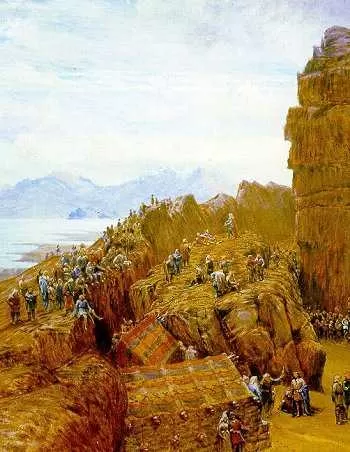The TV series Civilisation, created by the renowned art historian Kenneth Clark, is a masterpiece that has captivated audiences for decades. With its stunning visuals and captivating narrative, it takes us on a journey through the history of Western civilization, showcasing its greatest achievements and highlighting its most significant moments. However, as much as we may admire and appreciate this series, it is essential to acknowledge that it is a product of its time and place.
Civilisation first aired in 1969, a time when the world was going through significant social and political changes. The series was a response to the growing interest in cultural heritage and the need to understand the roots of Western civilization. It was also a time when television was becoming a dominant medium, and Clark saw it as an opportunity to bring art and history to a wider audience. With its 13 episodes, Civilisation became a cultural phenomenon, reaching millions of viewers and sparking discussions about the nature of civilization and its future.
One of the most striking aspects of Civilisation is its stunning visuals. From the grandeur of ancient Greek temples to the intricate details of Renaissance paintings, the series presents us with a visual feast that is both breathtaking and educational. Clark’s expertise as an art historian is evident in the way he carefully selects and presents these images, making them come alive and telling a story through them. The series also features beautiful landscapes and architecture, showcasing the beauty of Europe and its cultural heritage.
But beyond the stunning visuals, Civilisation is also known for its compelling narrative. Clark’s eloquent and passionate narration takes us on a journey through time, connecting the dots between different periods and events and highlighting the common threads that bind them together. His deep knowledge and love for art and history are evident in every word he speaks, making the series not only informative but also deeply engaging. Through his narrative, Clark invites us to reflect on the meaning of civilization and its impact on our lives.
However, as much as we may admire and appreciate Civilisation, it is essential to acknowledge that it is a narrative of its time and place. The series presents a Eurocentric view of civilization, focusing primarily on the achievements of Western culture and neglecting the contributions of other civilizations. It also presents a romanticized and idealized version of history, ignoring the darker aspects of Western civilization, such as colonialism and oppression. While this may have been acceptable in the 1960s, it is crucial to recognize and address these biases in today’s world.
Moreover, Civilisation also reflects the cultural and social norms of its time. The series features a predominantly male perspective, with very few female voices and perspectives. It also presents a traditional view of art and culture, focusing primarily on the works of white, male artists and neglecting the contributions of women and people of color. While this may have been the norm in the 1960s, it is essential to acknowledge and celebrate the diversity of voices and perspectives in today’s world.
Despite these limitations, Civilisation remains a timeless masterpiece that continues to inspire and educate audiences. Its stunning visuals and compelling narrative make it a must-watch for anyone interested in art, history, and culture. However, it is essential to view the series critically and recognize its biases and limitations. As we continue to evolve and progress as a society, it is crucial to acknowledge and celebrate the diversity of voices and perspectives that make up our world.
In conclusion, Civilisation is a remarkable series that has stood the test of time. Its stunning visuals and compelling narrative continue to captivate audiences and spark discussions about the nature of civilization. However, it is essential to recognize that it is a product of its time and place and view it critically. As we continue to strive for a more inclusive and diverse world, let us appreciate and learn from the beauty and flaws of Civilisation.

